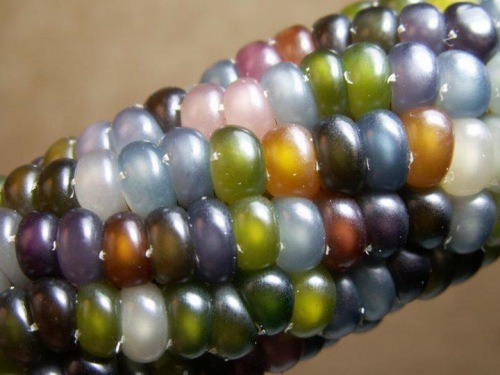The Livingstone Online website coming up pretty much out of the blue on my Facebook timeline a couple of days back reminded me that I had wanted to point to the online database of the Kew Economic Botany Collection, if for no other reason than that we haven’t done it before, and that the collection includes seed samples, not least a few collected on the good doctor’s expeditions. Then of course they went and posted something about the database on their blog yesterday. Anyway, we’ve talked about the potential value of museum seed specimens before. In particular, if you search for “sorghum seed” in this case you get (among other things) what is clearly a rather remarkable collection of material from Tanzania, sent to Kew in 1934 by the “Director of Agriculture.” Each seed sample is labelled with a local name. Wouldn’t it be great to go back and see if landraces with those names can still be found, and maybe even compare their DNA with anything that can be extracted from these old seeds?
Nibbles: Esquinas-Alcázar, Legumes, Neolithic, FAO data, Fisheries, Fish pix, Another old goat, Kew campaign, Bees
- Pepe gets a prize from a queen.
- The Princess of the Pea gives no prizes, though.
- Oldest farming village in a Mediterranean island found on Cyprus. No royalty, alas.
- The Emperor of Agricultural Statistical Handbooks is out. Oh, and the online source of the raw data has just got some new clothes.
- Fish are in trouble. Well, not all. Kingfish, queenfish, king mackerel and emperor angelfish all unavailable for comment.
- No royalty connected with these beautiful pictures of Asian fish either. Does a former Dutch consul count?
- Quite a crown on this wild goat.
- The Royal (geddit?) Botanic Gardens Kew’s Breathing Planet Campaign: The Video.
- ICIMOD on the role bees (including, presumably, their queens) in mountain agriculture.
Nibbles: Yams, Aroids, Shattering gene, Panicoid genomes
- Improving yams at IITA.
- Improving aroids the world over.
- Parallel evolution in the domestication of cereals. Will it help to improve them?
- Foxtail millet helps with switchgrass genome assembly. And, one supposes, improvement.
Glass gem corn goes viral
This image of ‘Glass Gem’ corn has sort of exploded on Milkwood Permaculture’s Facebook page, with over 3,000 “likes” and 10,000 “shares.” I just hope there’s enough seed out there.

Rewarding excellence in Indian rice breeding
India’s Directorate of Rice Research has just recognized the Paddy Breeding Station of Tamil Nadu Agricultural University (TNAU) as the best rice breeding station among India’s 107. The Vice-Chancellor of the university said that:
“The landmark varieties that have been developed through Pure Line Selection by this station triggered the growth of rice production in the State. The first variety — GEB 24 (Kichili Samba) — released during 1921 played a significant role in the development of rice cultivars over the years, not only in India, but world-wide.”
With help from the irrepressible Nik and his local version of IRRI’s all-knowing germplasm database we can actually kind of quantify that. It turns out that out of the 11 IRRI releases in 2011 (IR155-165), only IR157 (an irrigated japonica) doesn’t have GEB 24 in its pedigree. Just for that, it would seem to be a very well-deserved award. But I’m also told they helped IRRI build up its collection in the early days.
What about the other direction of use, though? Well, IR8 starts to feature, by itself, in the pedigrees of TNAU varieties in the early 70s (e.g. in CO38 and CO40), then by the early 80s there are 5 IRRI lines involved in the development of CO43. But by the 90s there are a couple dozen IRRI lines in the pedigree of CO47. So the flow of germplasm has been two-way.
In more ways than one. Apparently, IRRI are in the process of restoring to TNAU some of their CO varieties, which they had lost for one reason or another, but had taken the precaution of sending to Los Baños. Good collaboration all around. Great to see the achievements recognized in the popular press, if not necessarily the collaboration. But then that’s what we’re here for.
LATER: Further delving into the database by our friends at IRRI reveals that TNAU sent material quite regularly to IRRI from 1961 to 1987, with a peak of 952 accessions in 1978. But “only 40% of TNAU’s CO varieties conserved in the IRRI genebank came directly from TNAU. 30% came via CRRI and 30% via other organizations. TNAU obviously shared their material widely.”